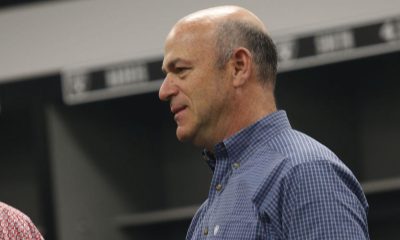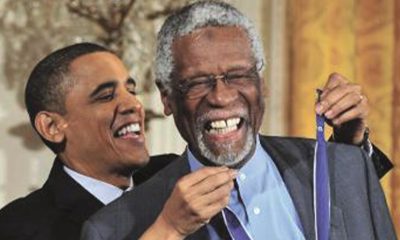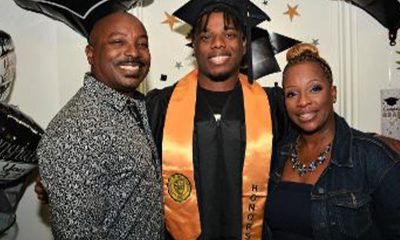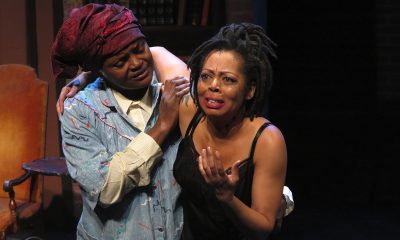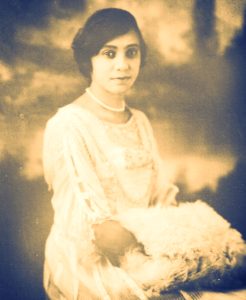Arts and Culture
Heaven Meets Earth in David Bruce Graves Work Showing at the Joyce Gordon Gallery
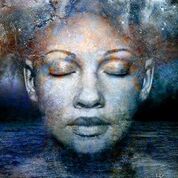
David Bruce Graves’ work gives the viewer a lot of room to think.
“Heaven and Earth,” the title piece in the window of the Joyce Gordon Gallery in downtown Oakland features a Black woman’s face. Her eyes are closed, her countenance serene, lights shine in her hair. Her bare shoulders glimmer beneath what appears to be a watery surface.
Is a Black woman the link between heaven and earth? Are heaven and earth a Black woman’s dream? Is this what it looks like to exist between the two?
Now in his mid-60s, Graves has traversed a career that includes commercial and fine art with an imagination and skill in multi-media that seems to know no bounds.
Born in Pittsburgh, Pa., yet raised in Oakland, Graves has been drawing and making art all of his life. His career began in the commercial art field when he graduated from the Academy of Art at the University of San Francisco before heading for New York City, where he lived and worked for many years, returning to the Bay Area in 2012.
Graves credits his success to his relationship with his dear “Aunt Ann Tanksley who was and is a fabulous artist and her husband, John, [who] was one of the best photo re-touchers in New York City,” Graves said. “When my family would visit their home in New York as a child, I was enchanted by their world and how they were so successful at it. Aunt Ann inspired and mentored me as she still does.”
Once he moved to New York, John Tanksley mentored him. “The many hours I spent looking over his shoulder as he retouched and manipulated photos for major advertising agencies had a big influence and closely relates to the technique I’m currently working in.”
Graves is shy about talking about his work, but visual art is the kind of medium where silence is often justified. In Graves work, the viewer wants to just live in the painting, and project what a subject might be thinking.
One example is “The Griot’s Wife,” where we see a man with a bag and his musical instrument, the kora, preparing for a storytelling journey. His wife walks with him, yet her eyes speak volumes as she appears to contemplate her husband’s impending departure.
Graves uses a mixture of digital and traditional techniques and his compositions allow histories or multiple narratives to exist simultaneously. The works are not stagnant, but invite us into the medium to share our perspectives. We are in the now and then, joined at the horizon or along the edges where, as in African mythology, two calabashes meet, Damballah or the sacred snake holding the two hemispheres of the universe together.
Each of the 31 pieces deserves its own audience. Besides the art in the window, “Heaven and Earth,” there is “Bush,” featuring a woman with an Angela Davis-size Afro hairstyle crossed with Eve and Adam’s abode … or maybe it’s the countryside just outside of Accra – a place untamed, natural, pure. This “bush” is a world atop a woman’s head. Butterflies and hummingbirds like her energy, too – symbolic images that populate many of Graves’ landscapes.
Like an artistic DNA, the motifs allow the viewer to trace artistic creations through the large gallery from wall to window, across multiple canvases.
There are images of warriors standing unafraid with wild animals as others show subjects dissolving, turning swiftly, spinning into funnels. One painting of liberated women stepping from the plantation into commerce and prosperity indicates Graves’ fascination with the period after slavery when Africans could join this American society as participants economically and politically.
So, we see these women dressed for success challenging prejudicial and racist ideas of worthiness or equality.
In fact, the majority of the subjects are Black women with emancipated, take-charge personas, free from white pathology. It is no wonder his work flies from the walls wherever he exhibits.
David Bruce Graves “Heaven and Earth” exhibit at Joyce Gordon Gallery through Jan. 31, 2020, 414 14th St., Oakland, CA, 94612.
Arts and Culture
Faces Around the Bay Dr. Carl Blake, Pianist
Born in Liberty, Missouri, Carl Blake, a virtuoso and respected pianist, made his most recent migration to the East Bay in 1999. One might have seen him performing recently at Noontime Concerts in San Francisco, or at the Piedmont Center for the Arts in Oakland. He is Director of Music at The Church for the Fellowship of All Peoples in San Francisco. He was also co-organizer and collaborative pianist at Herbst Theater for The Majesty of the Spirituals concert in 2022 and has held several church positions in the Bay Area.
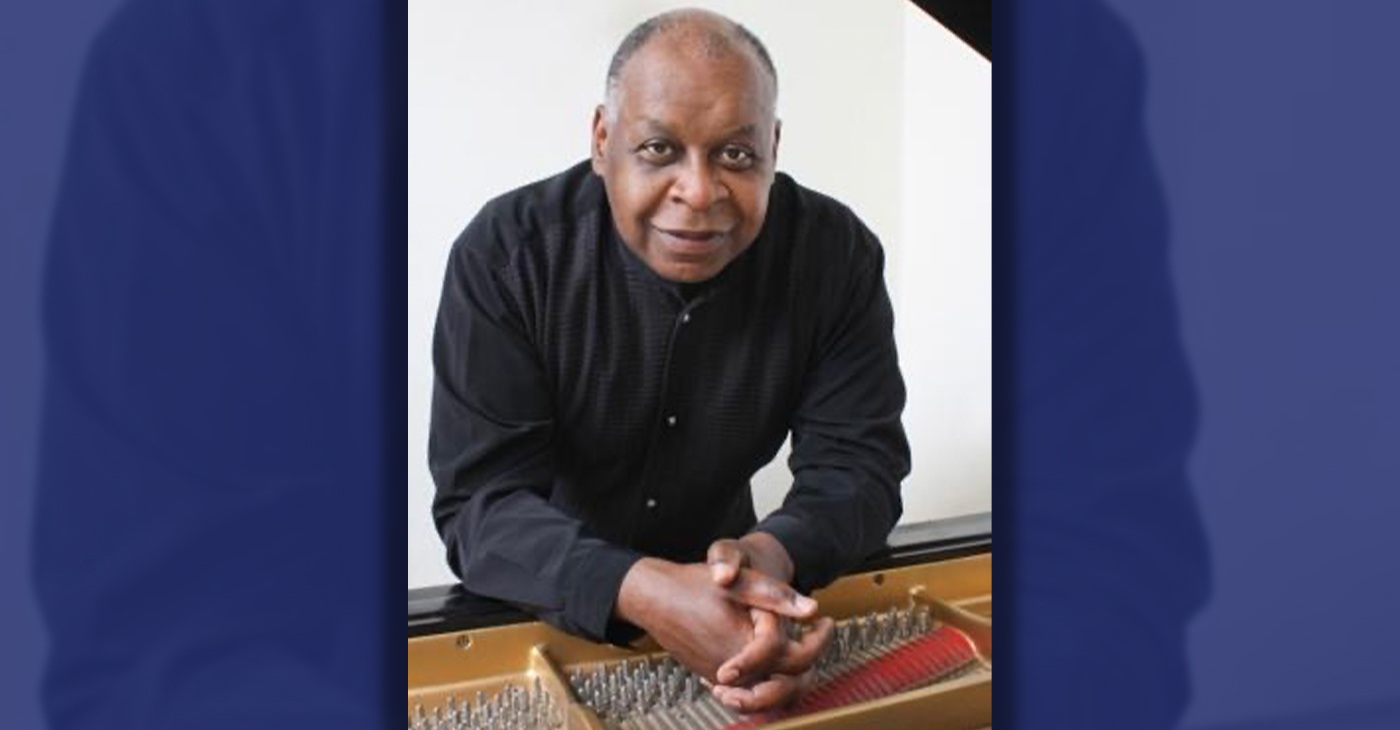
By Barbara Fluhrer
Born in Liberty, Missouri, Carl Blake, a virtuoso and respected pianist, made his most recent migration to the East Bay in 1999.
One might have seen him performing recently at Noontime Concerts in San Francisco, or at the Piedmont Center for the Arts in Oakland. He is Director of Music at The Church for the Fellowship of All Peoples in San Francisco. He was also co-organizer and collaborative pianist at Herbst Theater for The Majesty of the Spirituals concert in 2022 and has held several church positions in the Bay Area.
Blake obtained a Bachelor of Music from Boston University and continued post-baccalaureate studies in Jamaica before earning a Master of Arts in Music at San Jose State University. He was the recipient of two Fulbright residencies in Honduras and completed a third residency at the University of St. Petersburg in Russia. He has a Doctor of Musical Arts from Cornell University.
At age 19, Blake, then an undergraduate piano major at Boston University, was “discovered” by Impresario Dr. W. Hazaiah Williams, who is the Founder and Director of Today’s Artists/Four Seasons Arts.
Williams honored Blake by awarding him the first Marian Anderson Young Artist Award. Anderson personally presented the award at the Masonic Auditorium in S.F. Subsequently, Blake was presented by Dr. Williams in his San Francisco debut at The Herbst Theatre. Williams subsidized a year of study abroad for Blake at the Paris Conservatory of Music. Additionally, Williams sponsored Blake’s New York Weill Hall debut, where he has performed twice since. Blake performed several times at the Yachats Music Festival in Oregon.
Blake continues to perform nationally and abroad. His hobbies are reading, baking and travel. He says, “I’m still pumping ivories, as Belgian pianist Jeanne Stark described the disciplined practice of concert piano.”
Arts and Culture
Oakland Jazz Great Offers Master Class as City Declares “John Handy Day”
World-renowned jazz master saxophonist John Handy, a McClymond’s High School graduate, was presented with a Mayor of Oakland Proclamation declaring Feb. 12, as John Handy Day in the city. Handy is most notably known as the featured saxophonist for Charles Mingus on “Goodbye Pork Pie Hat” from the album “Mingus Ah Um” (1959) and on “Hard Work” from his own album “Hard Work” (1976).
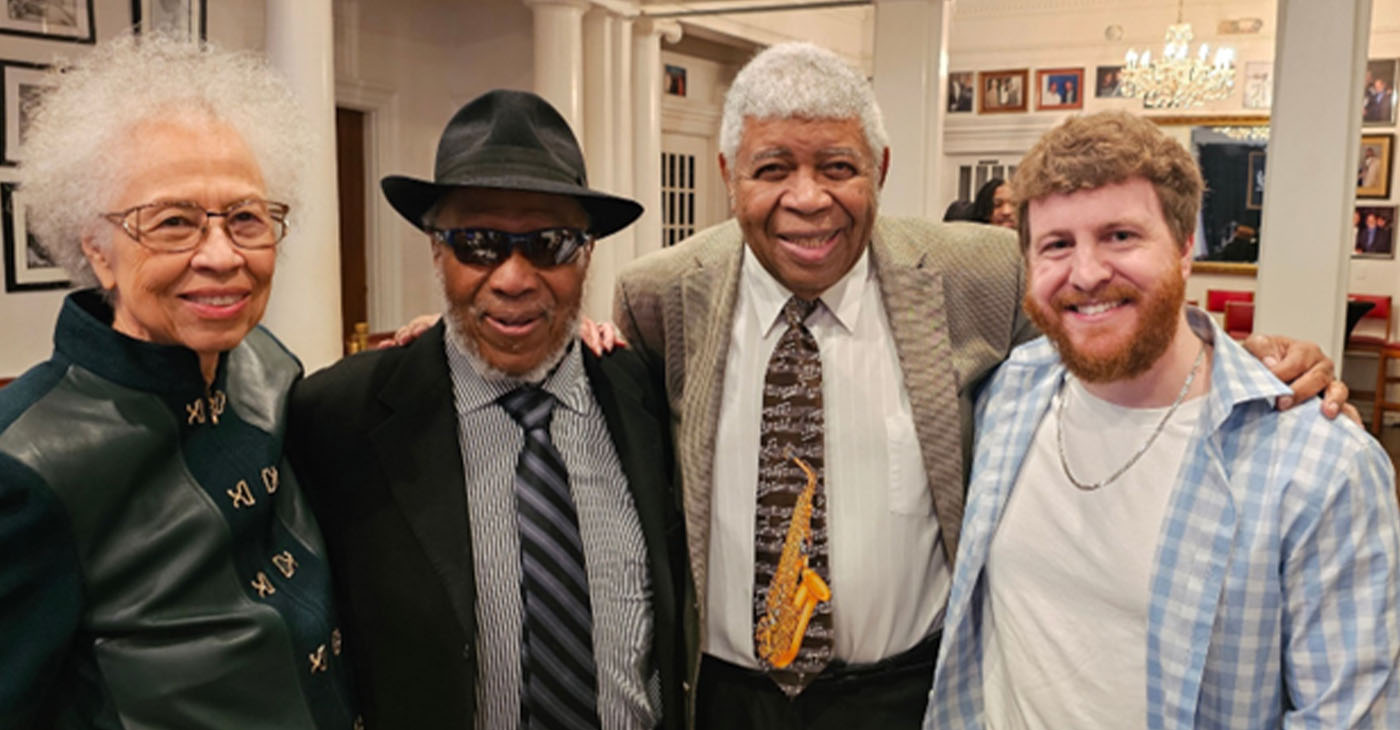
By Conway Jones
World-renowned jazz master saxophonist John Handy, a McClymond’s High School graduate, was presented with a Mayor of Oakland Proclamation declaring Feb. 12, as John Handy Day in the city.
Handy is most notably known as the featured saxophonist for Charles Mingus on “Goodbye Pork Pie Hat” from the album “Mingus Ah Um” (1959) and on “Hard Work” from his own album “Hard Work” (1976).
“John Handy is a jazz icon and an inspiration to musicians everywhere,” said Ayo Brame, a 16-year-old Oakland tenor saxophone player who is enrolled at the Oakland School for the Arts.
In celebration of this day, the reception in downtown Oakland at Geoffrey’s Inner Circle was a gathering of artists, young and old, coming together in his honor and celebrating his 91st birthday.
Handy presented a Saxophone Colossus free masterclass for musicians. This class afforded a rare opportunity to learn about the saxophone from an aficionado. The class was free and open to all – saxophonists, vocalists, aficionados, students, and casual listeners.
“As a longtime friend for over 60 years, and fellow musician who has had numerous opportunities to share the stage with John, it has always been a pleasure performing with him and hearing his creative interpretations of the music and his gift of ease inspiring the next generation of jazz musicians,” said Roger Glenn, a multi-instrumentalist.
Arts and Culture
Musical Chronicling Life of Betty Reid Soskin Set for Bay Area Debut
Betty Reid Soskin’s storied 102 years includes time spent as a WWII defense worker, activist, business owner, songwriter, National Park Service park ranger and so much more. Now the Richmond icon is the subject of a musical based on her incredible life.
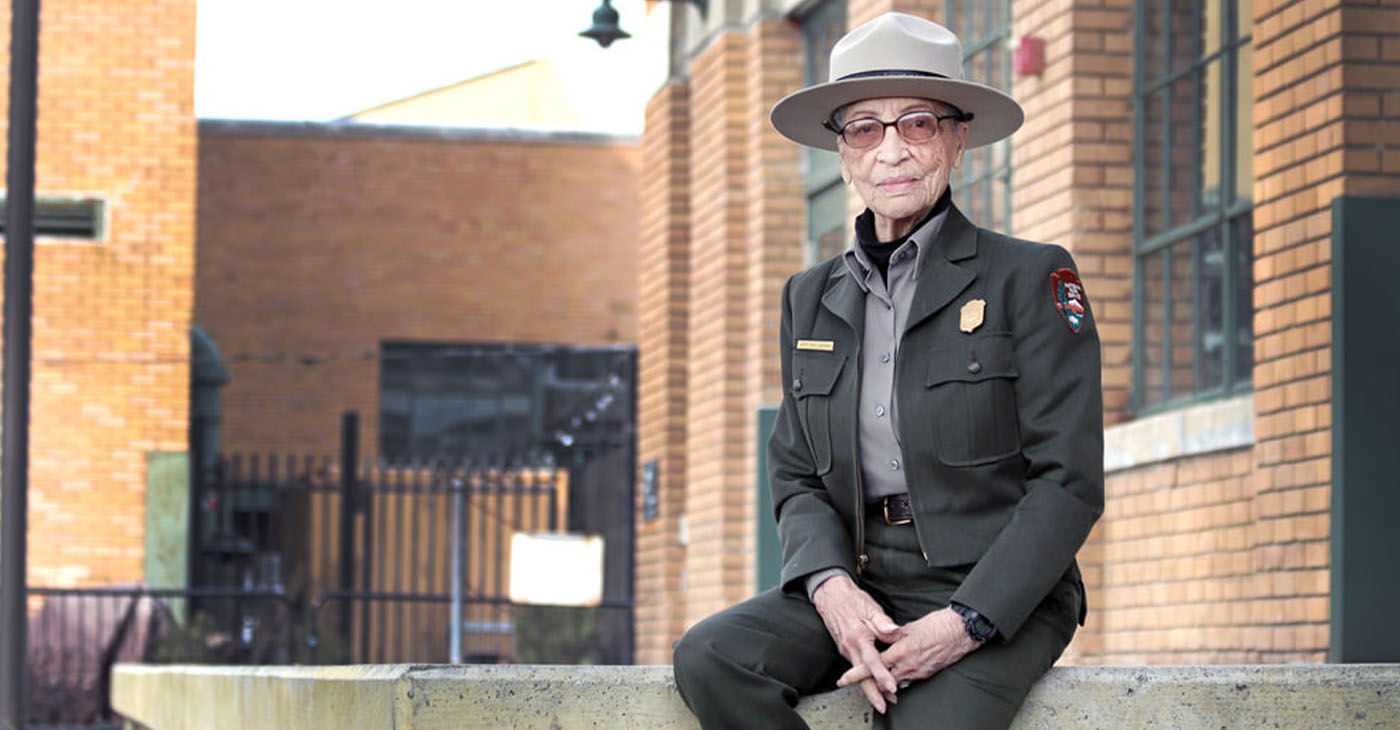
The Richmond Standard
Betty Reid Soskin’s storied 102 years includes time spent as a WWII defense worker, activist, business owner, songwriter, National Park Service park ranger and so much more. Now the Richmond icon is the subject of a musical based on her incredible life.
“Sign My Name to Freedom,” a San Francisco Bay Area Theatre Company (SFBATCO) production which will focus on the life, music and writing of Ms. Soskin, will premiere at San Francisco’s Z Space Friday, March 29 and continue through Saturday, April 13. Tickets range from $15–$65 and can be purchased online at https://www.sfbatco.org/smntf
The musical is directed by Elizabeth Carter, while playwright Michael Gene Sullivan integrates Ms. Soskin’s own music throughout dialogue between what SFBATCO calls “The Four Bettys” as they progress through a century of experiences of this awe-inspiring American woman.
The cast of “Sign My Name to Freedom” features Tierra Allen as Little Betty, Aidaa Peerzada as Married Betty, Lucca Troutman as Revolutionary Betty and Cathleen Riddley as Present Betty Reid Soskin, according to Artistic Director Rodney Earl Jackson Jr. and Managing Director Adam Maggio. Other casting will be announced in the future.
Jackson said that having Soskin’s blessing to steward her life’s story is an honor and career highlight for him and that her journey stands as “a beacon for Black Americans, women and people of color all across the world [and] is a testament to the strength of the human spirit.”
San Francisco’s Z Space is located at 450 Florida St. in San Francisco. Check out the trailer here at https://www.youtube.com/watch?v=B-ap9N2XBB0
-

 Activism4 weeks ago
Activism4 weeks agoOakland Post: Week of March 20 – 26, 2024
-

 #NNPA BlackPress3 weeks ago
#NNPA BlackPress3 weeks agoCOMMENTARY: D.C. Crime Bill Fails to Address Root Causes of Violence and Incarceration
-

 #NNPA BlackPress3 weeks ago
#NNPA BlackPress3 weeks agoMayor, City Council President React to May 31 Closing of Birmingham-Southern College
-

 #NNPA BlackPress4 weeks ago
#NNPA BlackPress4 weeks agoFrom Raids to Revelations: The Dark Turn in Sean ‘Diddy’ Combs’ Saga
-

 #NNPA BlackPress4 weeks ago
#NNPA BlackPress4 weeks agoCOMMENTARY: Lady Day and The Lights!
-

 Activism3 weeks ago
Activism3 weeks agoOakland Post: Week of March 27 – April 2, 2024
-

 #NNPA BlackPress4 weeks ago
#NNPA BlackPress4 weeks agoBaltimore Key Bridge Catastrophe: A City’s Heartbreak and a Nation’s Alarm
-

 #NNPA BlackPress4 weeks ago
#NNPA BlackPress4 weeks agoBaltimore’s Key Bridge Struck by Ship, Collapses into Water



